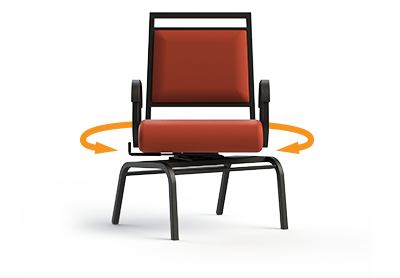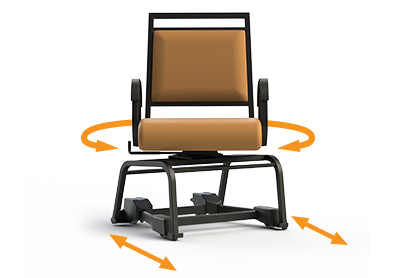Providing dignity and safety at the dining table.
Caring for someone living with Parkinson’s is a daunting challenge for both families and professional caregivers.
Those providing care are encouraged to slow down their routine, allowing the person living with Parkinson’s to control as much of their movement as they can on their own.
Caregivers are reminded to employ positive, rhythmic techniques to assist the person when they “freeze” and to maintain eye contact throughout the caregiving process. Because of their impaired movement, daily tasks will simply take longer to accomplish.
The Challenge in the Dining Room
Mealtime can be especially problematic for people with Parkinson’s as the process of being seated appears to be routine and mundane. However, upon further observation, there are two distinct and separate steps that need to be understood when a person with Parkinson’s is assisted at the table:
Step 1: Getting seated in the chair
It is not uncommon for a person with Parkinson’s to bump into furniture while attempting to get seated in a chair. This can have disastrous results, as any unintended contact with the chair can cause it to move unexpectedly, often resulting in a fall or injury.
Step 2: Being moved up to the table
Once seated, the physical demands required to move a seated person up to the table can be exhausting for the caregiver. Any activity which involves pushing, pulling, shoving, and twisting of the seated person serves only to increase mealtime stress and anxiety for both seated person and caregiver.
A Better Way
Chairs that swivel and lock eliminate table interference as the seat of the chair is swiveled 90 degrees away from the table. This allows full access to the seat of the chair for the person being seated. Once they are comfortably in the chair, they can release the swivel lock and rotate themselves towards the table.
Additionally, chairs that also roll and brake for safety can be moved even further from the table, providing increased clearance, should a second caregiver be required when transferring the person into the seat of the chair. Once seated, they can be rotated back towards the table, and the caregiver effortlessly glides them into position at the table before securing the brakes.
Why is a heavier chair safer when caring for a person with Parkinson’s?
At first glance, caregivers assigned the task of moving a seated person up to the table opt for a lightweight chair, thinking this will ease their effort when moving that person forward.
However, what they fail to appreciate is (a) once the person is seated, it is the total weight of the person and the chair that needs to be moved up-to the table, and (b) a lightweight chair tends to move prematurely, increasing the risk of injury to the person being seated.
Caregivers should consider selecting a chair designed both for stability and mobility. A heavier chair provides increased stability and thus less likely to move prematurely. Chairs fitted with inline wheels provide needed mobility, enabling the caregiver to roll the seated person up-to the table with ease and grace.
Chairs that Swivel…Turn…Roll…and Brake for safety:
- provide those with Parkinson’s a greater degree of dignity and self-worth
- eliminate the need for care partners to push-pull-shove-twist on a chair
- reduce mealtime stress and anxiety for both the seated person and the care partner
- create a more enjoyable mealtime routine for all



